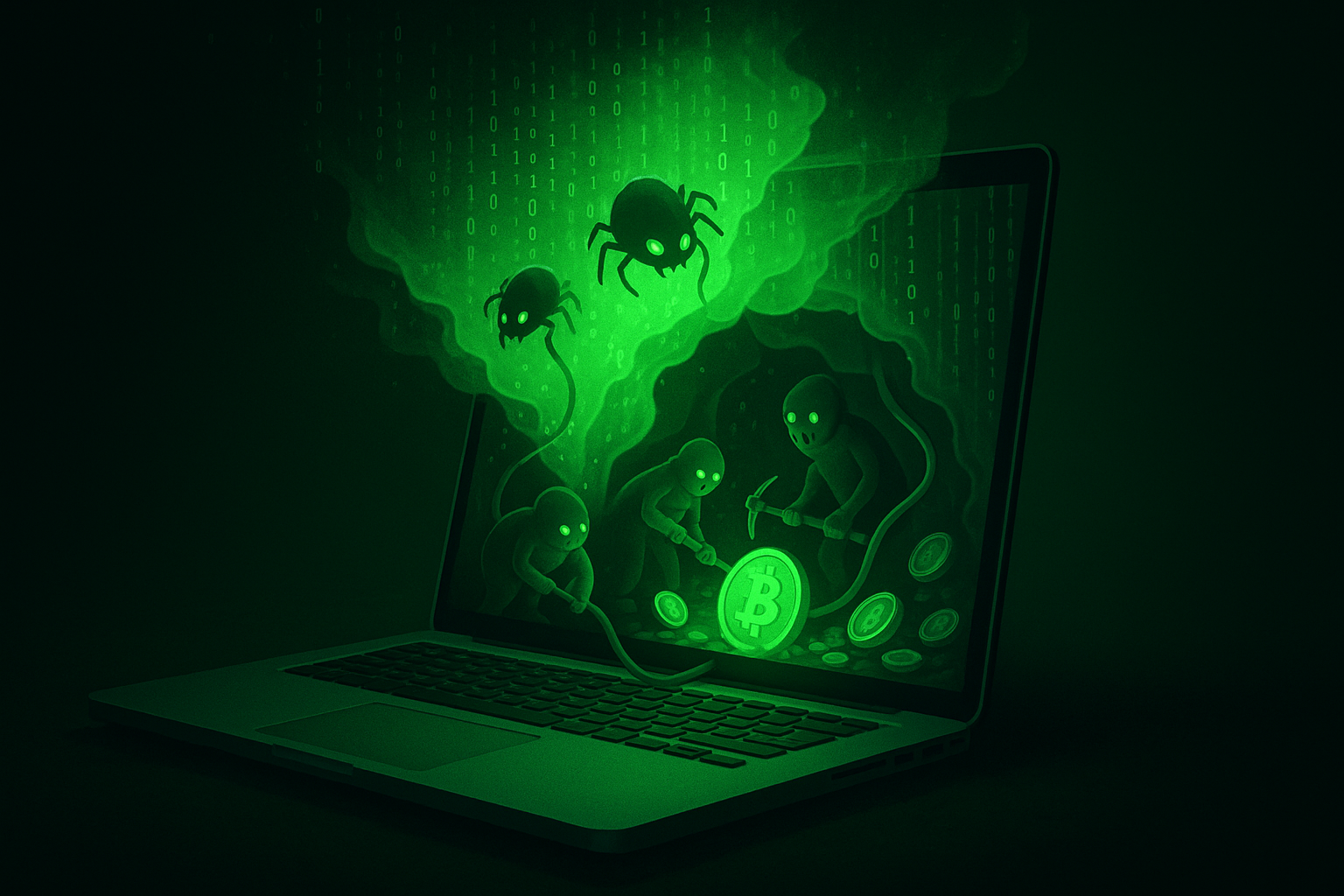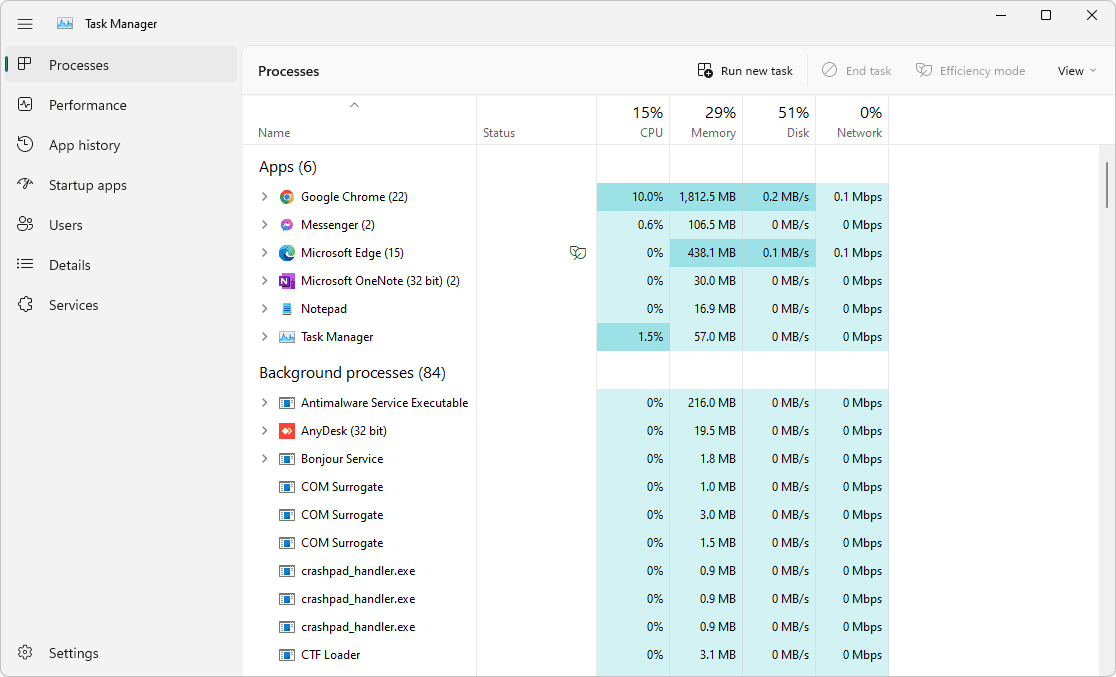Understand cryptojacking basics
The meaning of cryptojacking

When you ask, “What is cryptojacking?” you are talking about a hidden cyber threat in which criminals use malware or scripts to hijack the computing resources of others. Instead of running the mining process on their own costly rigs, these hackers use your device’s CPU or GPU power to generate coins or tokens. You might not see any pop-ups or warnings—the process often runs silently in the background.
Because cryptojacking can run undetected for long periods, it is a favorite method of cybercriminals who want passive income. Your device ends up footing the energy bill and paying the performance costs. Everything from desktop computers to mobile phones and even smart home gadgets can be targets if they’re not secured.
Real-world examples
Imagine you’re browsing a site that looks trustworthy. It could be a news portal or a forum for crypto beginners. One click triggers a hidden script on your browser. The malware begins mining without raising any red flags. You continue reading articles, unaware that your CPU is overheating—and that your battery is draining faster than usual.
Another scenario is a malicious email attachment. You open a file you think is safe, but that file installs a cryptojacking bot. This bot hunts for idle resources, chewing through CPU cycles whenever you’re not looking. From that point on, your device’s performance becomes erratic, your energy bills might rise, and the money made goes into some anonymous wallet.
Why it’s a rising threat
Cryptojacking is a tempting venture for cybercriminals because it involves minimal risk relative to other attacks. Instead of announcing themselves with ransomware pop-ups, they steal your resources quietly and maintain a steady inflow of revenue. As cryptocurrency continues to gain popularity, the incentive to mine coins illegally has also grown.
Another reason for the rise is the expanding variety of digital devices. Today, you might own multiple smartphones, tablets, laptops, and smart TVs. Each one is a potential cryptojacking target if it’s connected to the internet and is not protected by strong cybersecurity practices.
Spot the warning signs
Key indicators
Knowing the symptoms of cryptojacking is crucial. You might notice:
- Unexplained slowdowns. Even simple tasks—like browsing or opening documents—take forever.
- Overheating. Your fans spin faster than usual, or your phone runs hot to the touch.
- High battery drain. Mobile devices might lose charge rapidly compared to normal usage.
- Excessive electricity bills. Desktop PCs or mining rigs consume more power when cryptojacking scripts run in the background.
If you suspect something is off, these red flags often appear alongside unusual browser activity or random system crashes. By recognizing these alerts quickly, you can take the right steps to remove malicious software before it causes damage.
Tools to detect cryptojacking

One of the easiest ways to confirm cryptojacking is by monitoring performance metrics. Several tools and tactics can help:
CPU usage trackers
You can check your CPU usage through your operating system’s built-in Task Manager (Windows) or Activity Monitor (macOS). If you notice high CPU usage even when you have few apps open, that’s a common sign of a cryptojacking script. Keep an eye on suspicious processes you don’t recognize.
Anti-malware software
Most comprehensive antivirus or anti-malware tools now protect against cryptojacking. They monitor for known malicious signatures and can flag or quarantine cryptojacking scripts. Remember to keep these tools updated so they can recognize new threats.
Browser extensions
Certain browser add-ons can block or detect mining scripts on websites. These extensions prevent malicious scripts from hijacking your browser. They’re useful if you visit multiple websites daily and want a quick defense against cryptojacking.
Protect your devices and data
Best practices
Preventing cryptojacking starts with strong digital hygiene. Focus on these routine habits:
Regular updates
Hackers often exploit known vulnerabilities in operating systems, browsers, or plugins. By applying updates as soon as they’re available, you patch potential entry points. This step might feel mundane, but patches are essential for plugging security holes.
Secure Wi-Fi
Free public Wi-Fi networks can be playgrounds for attackers. If you connect to an insecure network at a coffee shop or airport, consider using a VPN (Virtual Private Network) to encrypt your data. This makes it far harder for criminals to sneak cryptojacking scripts onto your device.
Additional tips
Firewalls
A properly configured firewall can block suspicious inbound or outbound traffic. While it won’t catch everything, it’s another layer of defense that can help prevent unauthorized access.
Strong password management
If you reuse the same passwords in multiple places, one data breach can expose all of your accounts. This can lead to cryptojacking or other attacks on any devices linked to those compromised accounts. Always use strong, unique passwords or a reputable password manager to keep them secure.
Virtual private network
As mentioned, a VPN encrypts your connection, especially on public networks. It doesn’t instantly remove cryptojacking threats, but it does reduce the chance that hackers can intercept your traffic or insert malicious scripts while you’re browsing.
Explore cross-chain exchanges for safe trading
Cryptojacking not only targets your current holdings but can also impede your ability to explore new projects or move assets effectively. Being aware of safer ways to exchange cryptocurrency can help you reduce risk. A good cross-chain service allows you to shift from one network to another without complicated steps or inflated fees.
Why cross-chain matters
In a fast-paced market, you might find interesting projects on different blockchains. Cross-chain exchanges let you handle token swaps from, say, Ethereum to another network seamlessly. This agility ensures you’re not locked into a single chain, which can be especially convenient when you want to diversify across multiple projects.
A note about xgram
When you want a quick and efficient cross-chain or traditional swap, xgram can be a convenient option. Unlike many platforms requiring a wallet connection, xgram allows you to exchange crypto without linking your personal wallet. This helps keep your personal keys more secure. You can complete trades between various networks in a single step, and it could save you fees that typically come with bridging. By not forcing you to integrate external wallets, xgram reduces the points of failure that hackers can target. Using it for day-to-day swaps can be a streamlined way to manage your assets and minimize the risk of malicious scripts intercepting your transactions.
Additional benefits
Services like xgram can also be an alternative if you’re on the go frequently. You can log in and complete trades without juggling browser extensions or multiple logins, which decreases the potential attack surface for cryptojacking scripts to exploit. That said, it’s still crucial to practice the security tips mentioned above—every platform, no matter how convenient, is only as secure as the user’s overall digital hygiene.
Summary
Cryptojacking is a stealthy cyber threat that could lurk in your browser tab or hijack your system without warning. The concept is simple: attackers harness your device’s resources to mine cryptocurrency for themselves. By recognizing slow performance, increased power usage, and worrying CPU spikes, you can quickly detect suspicious activity. Then, using robust cybersecurity practices—routine scans, strong passwords, updated software, and a careful approach to public Wi-Fi—goes a long way toward keeping your devices safe.
Cross-chain exchanges like xgram add a unique angle to this discussion by letting you manage your crypto with lower fees and fewer wallet integrations, increasing your overall security posture. By combining your improved security habits with the right exchange platforms, you’ll stay in the driver’s seat, fully in control of your own devices and transactions.
FAQs
What is cryptojacking in simple terms?
Cryptojacking is when hackers install hidden software to mine cryptocurrency on your device without your permission. They use your CPU or GPU power and often stay undetected, leaving you with a slow system and higher energy bills.How do I detect cryptojacking on my phone or computer?
Watch for sudden performance issues, overheating, and faster battery drainage. You can also check CPU usage in your device’s Task Manager or Activity Monitor to see if unknown processes are using lots of resources.Is cryptojacking more common than other cyber threats?
While ransomware and phishing get plenty of headlines, cryptojacking is also prevalent. Attackers like it because it doesn’t announce itself with pop-ups or demands; it stealthily mines crypto for as long as possible.Can I prevent cryptojacking just by using an antivirus?
An antivirus or anti-malware tool helps, but you should also keep software updated, set strong passwords, and avoid suspicious links. That layered approach significantly lowers your risk.Do cross-chain exchanges help protect my crypto?
Cross-chain exchanges can reduce some risks by simplifying transactions and lowering the number of tools you need. For example, xgram doesn’t require connecting your personal wallet, which reduces exposure to potential hacks. Always maintain secure practices—and choose reputable platforms—for maximum protection.




